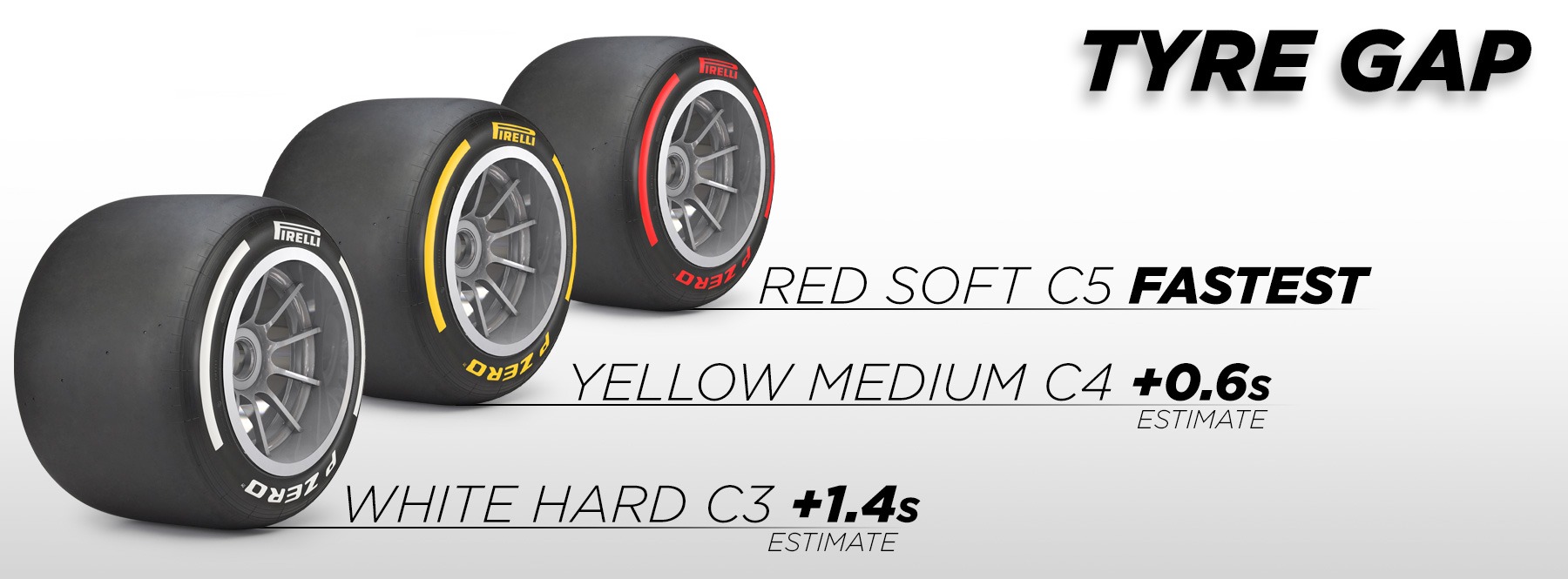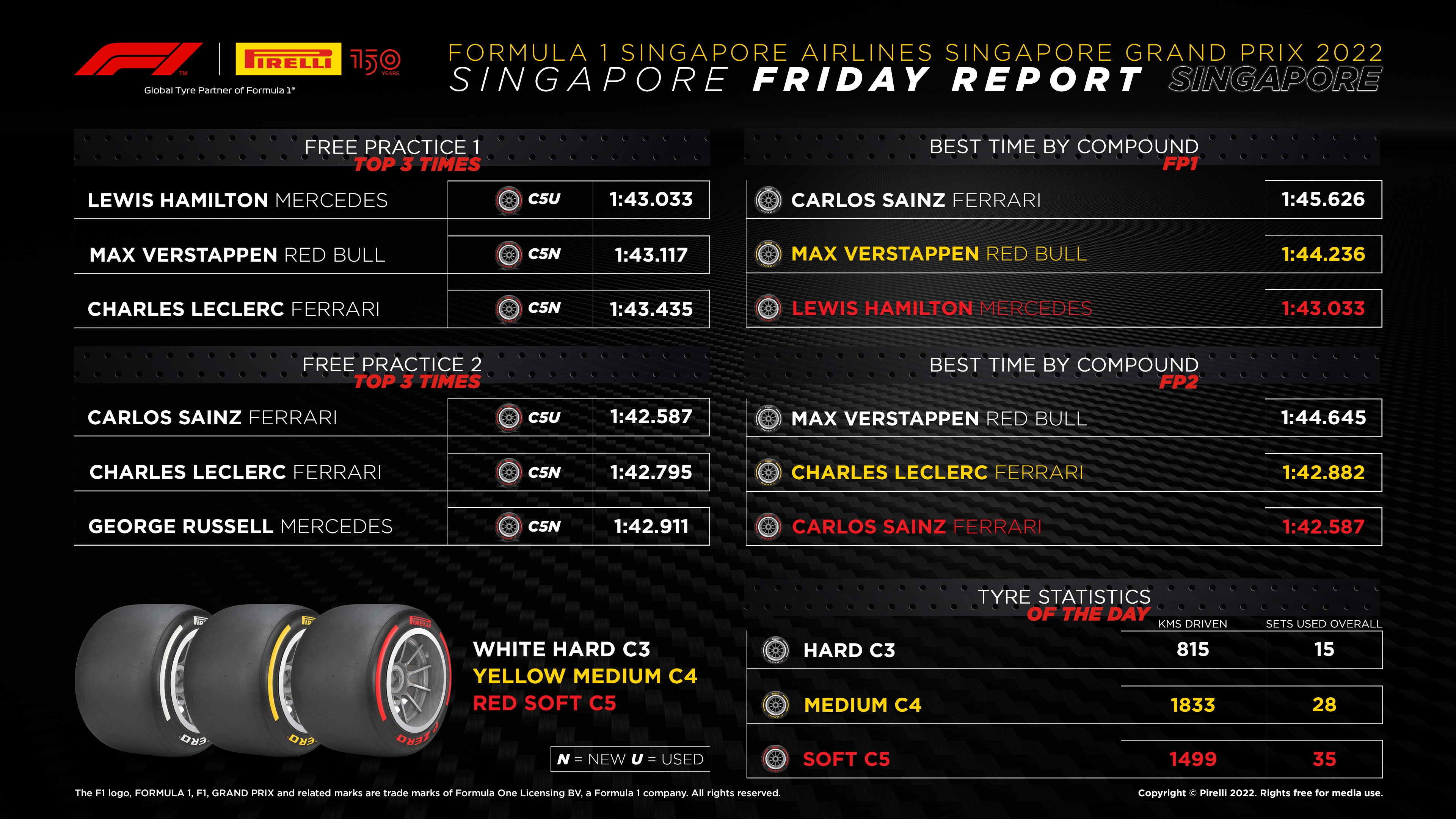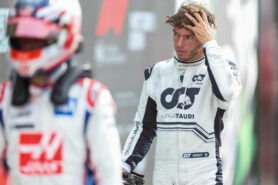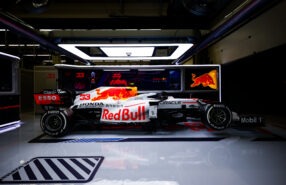Five things learned on Friday before the 2022 Singapore F1 GP
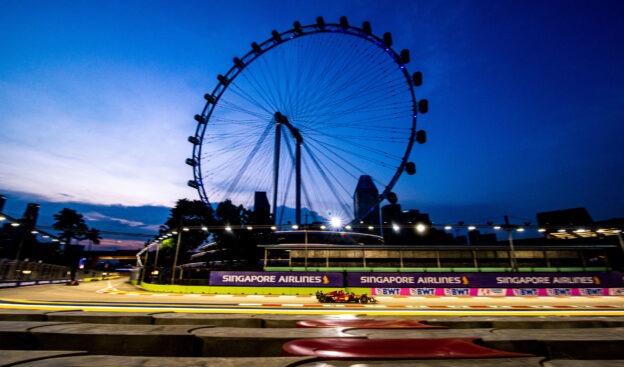
After two years of absence the roaring Formula 1 engines were back in the streets of Singapore yesterday. A lot has changed since the last F1 was here in 2019. We now have new cars, 18 inch tyres, pieces of tarmac and even a new World Champion! The cars went a lot slower, but one thing had not changed. The humidity and heat around the circuit were still the same.
There are 1700 lights installed that illuminate the sparkling Marina Bay circuit. These lights, which characterise the Singapore Grand Prix, have a power of 2000W and were installed by Italian firm DZ Engineering from Forli. The whole operation, which involves putting up and taking down pylons, projectors, generators, electrical cabins, and wiring, takes nearly six months to complete.
These 5 things were learned:
- For the famous Singapore night race, Pirelli choose the softest three tyres in the Formula 1 range. For the fifth time this year, the C3 has been nominated as the P Zero White hard, the C4 as the P Zero Yellow medium and the C5 as the P Zero Red soft, on a street circuit that is usually characterised by a high rate of track evolution, weather permitting.
- The performance gap between the compounds is in line with the expectations of Pirelli’s engineers: 0.8 seconds between hard and medium, and around 0.6 seconds between and soft and the medium.
- It’s interesting to note how the floor package on the cars, combined with Singapore’s slow corners, translates into less aerodynamic downforce, resulting in higher lap times compared to other circuits this season.
- The track was dry during yesterday's free practice sessions, which took place with a slight breeze. The FP1 session ran at sunset, while FP2 took place in the evening under the lights. Temperatures remained stable between 35°C and 37°C degrees in FP1, before dipping by a couple of degrees in FP2. Today the weather forecast shows rain during the morning and afternoon (with a 60% chance of precipitation, according to Meteo France).
- In FP1, Mercedes driver Lewis Hamilton set the best time of 1:43.033 min on Soft compound tyres, ahead of the Red Bull RB18 of Max Verstappen and the Ferrari F1-75 of Charles Leclerc. Carlos Sainz went fastest in FP2 in the other Ferrari F1-75 thanks to a time of 1:42.587 min also on the Softs, ahead of Leclerc and the Mercedes W13 of George Russell.
Pirelli's Chief Engineer: Simone Brerra said:
“In FP1 particularly, we saw a high degree of track evolution. In FP2, even though the grip was already good from the start of the session, the times improved notably thanks to better grip. The teams chose to focus mainly on the two harder compounds nominated today, putting the softs on at the end in order to simulate qualifying laps. The performance gaps ended up pretty much as we expected.
Degradation on the medium and soft compounds seems quite high over the long runs at the moment. Today the teams concentrated less on race pace than usual, as grid position on the Singapore street circuit is very important to maximise chances of success on Sunday. So qualifying tomorrow will be crucial.”
✅ Check out more posts with related topics:


